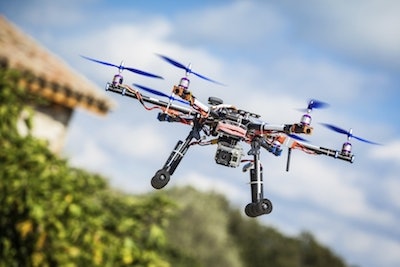
While avid fans from diverse industries eagerly await the Federal Aviation Administration’s rules on commercial drone use, the unmanned vehicles wait alongside other unregulated technologies.
The FAA’s proposed regulations for small drones just closed its comment period last week, meaning that releasing a final rule on small drones might take another year and a half.
 The anticipation will only make the shift toward commercial drone use more dramatic. Joan Lowy and Jennifer Agiesta of the AP write, “It may be two or three years before the rules take effect, but once they do thousands are expected to buzz U.S. skies.”
The anticipation will only make the shift toward commercial drone use more dramatic. Joan Lowy and Jennifer Agiesta of the AP write, “It may be two or three years before the rules take effect, but once they do thousands are expected to buzz U.S. skies.”
One major reason for the holdup could be the public opinion — a December 2014 AP poll revealed that a mere 21 percent of respondents approved of commercial drone use, 35 percent were in the middle and 43 percent opposed it.
The public also might be hesitant to accept fleets of package-delivering drones zooming overhead, but a report from The Association for Unmanned Vehicle Systems International details some possible economic benefits of drones.
The report predicts that drone use will lead to 100,000 new jobs and an economic impact of $82 billion in the U.S. by 2025. It concludes that precision agriculture and public safety are “the most promising commercial and civil markets.”
Several uses within these markets garnering particular attention are agriculture, delivery and disaster relief. Here is more information about drone use that leaves many industries asking: Is it worth investing in the controversial technology?
Agriculture
Although the limited agricultural use of small drones was already permitted, officials approved a large drone called the RMAX just yesterday. The RMAX is big enough to carry tanks filled with fertilizers or pesticides, which make it convenient for more precise crop spraying.
An article from The Associated Press in January listed a few other ways drone usage could affect food supply: including scouting farms for problems, applying chemicals with more precision, spotting escaped animals and measuring fish populations and water conditions.
The article reads, “The Association for Unmanned Vehicle Systems International, a trade group, says agriculture could account for 80 percent of all commercial drone use, once government regulations allow it.”
Delivery
Just last week, USPS named Workhorse Group among a list of finalists for a vehicle contract. Manufacturing.net reporter Andy Szal writes, “Reports indicate the [U.S.] Postal Service could use the Workhorse electric delivery truck, which also serves as a docking station for the company's HorseFly drones.”
This announcement places USPS alongside Amazon on the list of services interested in exploring drones as tools for cheaper, faster delivery. Amazon is already well on its way to drone use — Amazon’s Prime Air received the OK from the Federal Aviation Administration earlier this month to begin test flights.
Disaster Relief
The American Red Cross recently commissioned a report analyzing the potential uses for drones in disaster relief situations. However, this use is on hold until the Federal Aviation Administration releases its final drone regulations in the coming years.
Szal writes, “Drones equipped with cameras could enable workers to see developments in real time and help find survivors, deliver supplies, track flooding or other dangers and inform decisions about where to establish relief operations on the ground.”
Drones used for delivery or disaster relief face a similar challenge: AP Business Writer Scott Mayerowitz says, “Nobody has yet developed a successful system for the devices to sense and avoid other objects like trees, streetlights, buildings and even other drones.” Some drone manufacturers are exploring echolocation and optical sensors as potential tools to help make drone use safer.
If drone use takes off as intensely as I predict, this technology will be essential for managing the crowded airspace.






















